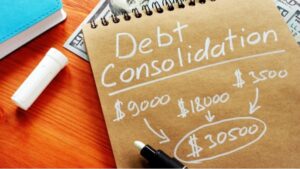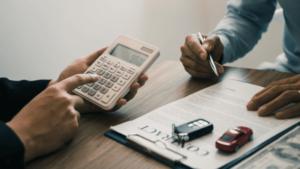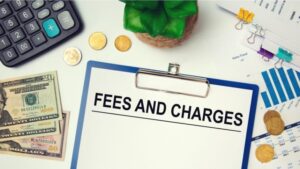Secured vs unsecured loans: What’s the difference?
Before you get a loan, it’s critical to distinguish between secured vs. unsecured loans. A secured debt warrants collateral, but an unsecured debt doesn’t. Choosing between the two affects your financial risk and well-being. So, it’s important to understand the differences to pick the one that’s right for your needs and situation.
To guide you, we look at the differences between secured and unsecured debts, examples, and benefits and drawbacks of both loan options.
What is a secured loan?
As mentioned above, secured debts are backed up by collateral. It can be any valuable asset, such as a home, car, savings or investment account, bonds, and stocks. If a borrower defaults on the loan, lenders can take over the asset to make up for the loan.
Risks
Essentially, secured loans are riskier since your asset is on the line. Lenders and credit unions can take hold of your collateral until you repay your balance. For example, you set your car as the collateral for an auto loan. If you fail to pay the loan, your lender can repossess your vehicle.
Interest rates
Secured loans are less risky for lenders considering they need collateral. As a result, often, they have lower interest rates and better terms. However, interest rates and loan terms still depend on the lender, loan type, and credit score.
Borrowing limits
Also, secured loans are common for borrowing more money. They are supported by collateral, so you can have a higher borrowing limit.
Requirements
Because lenders take more risk compared to borrowers, secured debts are easier to qualify for. While lenders still assess your creditworthiness and financial capacity, your loan collateral adds value to your application. So, lenders may be less strict with the lending criteria.
Examples of secured loans
- Mortgages: A mortgage is a loan used to purchase a property. When you take out a mortgage, you use the home as collateral for the loan. If you default, your house can go into foreclosure where the lender seizes and sells the house to cover your outstanding loan balance.
- Auto loans: With a car loan, you use your vehicle as collateral. This means that the lender can take ownership of your car if you fail to pay off the loan.
- Secured credit cards: In a secured credit card, you need a cash deposit that will serve as your credit limit and collateral. This credit card is ideal for those with poor or limited credit history since it can help establish and build credit scores.
- Secured personal loans: A secured personal loan is protected by collateral, such as your savings account, car title, stocks, etc. If you default on your loan, the lender can take hold of your asset. For example, the lender can take your funds if you use your savings account as collateral.
- Home equity line of credit (HELOC): Home equity loans or HELOCs allow you to borrow using the equity in your home as collateral. In case you fail to pay off your debt, you risk your property and its equity.
What is an unsecured loan?
Unsecured loans, on the other hand, do not need collateral. That said, lenders make this sort of loan available based on your credit, income, and debt-to-income (DTI) ratio. Meaning it may be easier to qualify if you have good to excellent credit.
Keep in mind that if you make late payments or fail to pay off your loan, your credit score will dip. Though lenders and creditors cannot seize any asset, they can still take action against you if you default. They may instead sue you or pass your account to a debt collection agency.
Risks
Unsecured debt is safer for borrowers because lenders cannot take any asset in case of loan default. Lenders, on the other hand, see it as a higher risk, so they assess your application and rates based on your financial situation.
Interest rates
Unsecured loans expose lenders to more risk, so they typically have higher interest rates. Though if you have good credit, you can still qualify for favorable rates and terms. It varies per lender, but a good credit score is usually 670 or higher.
Borrowing limits
Unsecured loans often have lower borrowing limits because no collateral backs up the loan. But depending on your financial standpoint, some lenders may allow you to borrow up to $100,000 or even more. In the end, your creditworthiness and the lender or credit union affect how much you can borrow.
Qualifications
Considering lenders cannot recover any asset if you default, unsecured loans mainly have higher lending standards. They will assess your capacity to pay back the debt by checking your credit, income, and other debts.
So, applying for an unsecured loan may be easier if you have strong credit. But bad credit may make your loan application quite difficult.
Examples of unsecured loans
- Personal loans: Usually, most personal loans are unsecured. They can be used for various purposes, like weddings, vacations, and home renovations.
- Student loans: A student loan is used to pay for college expenses, including tuition, course materials, and fees. You can avail of student loans either through the Department of Education or private lenders.
- Credit cards: Unlike secured credit cards, a traditional credit card doesn’t require a cash deposit as collateral. Usually, they come with perks and rewards, lower fees, and better interest rates. But if you don’t pay off your full balance every month, you will incur interest charges based on your annual percentage rate (APR).
- Debt consolidation loans: If you have multiple debts, a debt consolidation loan can help you streamline your monthly payments. Debt consolidation allows you to combine multiple balances, such as credit cards, personal loans, etc., into one loan. This is a good idea if secure a debt consolidation loan with a lower interest rate than your existing loans. This way, you can save on the overall interest you pay.
- Personal lines of credit: A personal line of credit (PLOC) has a predetermined limit that you can withdraw as needed. In a way, they work similarly to credit cards. With this type of loan, interest is charged based on the amount you take out.
What is the difference between secured and unsecured loans?
One of the biggest differences between secured and unsecured debts is the risk they have for borrowers. With secured loans, you risk losing your collateral in case you default on your loan while unsecured loans are more uncertain for lenders.
Another difference between the two is their interest rates. Given that secured loans are safer for lenders, they tend to have lower interest rates and better terms. On the flip side, unsecured loans may have higher rates based on your credit report and score.
Also, banks and lenders are more lenient with the requirements for a secured loan. For example, credit standards can be lower since you have collateral. Yet, with an unsecured loan, you should meet higher credit scores to qualify for favorable rates.
What are the main advantages and disadvantages of a secured loan?
Pros of a secured debt
- Secured loans typically have lower interest rates and better terms than unsecured loans.
- You can borrow more if your loan is secured.
- Since secured debts are less risky for lenders, it can be easier to qualify.
- It usually has a longer repayment period because it’s usually used for big-ticket purchases (e.g. homes, cars, etc.).
Cons of a secured debt
- One of the biggest drawbacks is the risk of losing your collateral.
- Secured debts tend to be limited to the purpose of the loan (e.g. you can only use a mortgage to buy a house).
What are the main advantages and disadvantages of an unsecured loan?
Pros of an unsecured debt
- An unsecured loan is safer since you don’t have to worry about losing your assets.
- You can secure this type of loan even if you don’t have collateral.
- Unsecured personal loans can be used for many purposes.
Cons of an unsecured debt
- Typically, it has higher interest than a secured loan.
- You need to meet stricter requirements especially if you have poor credit.
Which is better: Secured or unsecured loan?
Deciding between secured and unsecured can be quite tricky. Since both loans have benefits and drawbacks, it should depend on your needs.
If you plan on borrowing large money, choosing a secured loan may be the way to go. Though, make sure you repay your loan to avoid risking your asset. If your credit score isn’t that good, then using collateral may be one way of reducing your interest rate.
Unsecured loans, however, are ideal if you prefer not risking your asset. This is also a great option if you have good or excellent credit so that you may be eligible for cheaper rates.
Bottom line
Secured loans may have lower interest rates, but you put your asset at risk. Unsecured loans, on the other hand, don’t need collateral, but you may have higher rates. Both have unique features, so it’s important to understand the differences between the two options. This can help you figure out which one benefits you the most.
Frequently asked questions
Are personal loans secured or unsecured?
An unsecured personal loan is a lot more common, but personal loans can also be secured. For example, you can put your car, savings account, and even stocks as collateral for a secured personal loan.
Where to find secured and unsecured loans?
Many financial institutions offer secured and unsecured loans. For example, you can apply from a lender, bank, credit union, and online lender.
What happens if you can’t pay back unsecured and secured loans?
With a secured loan, your collateral can be seized if you don’t make your monthly payments. For example, if you get an auto loan, you risk losing your car in case of default. Your credit reports and scores can also suffer if your lender or credit union reports you to the credit bureaus.
When you struggle to pay your unsecured loan, lenders may require you to pay late payment fees. This, in turn, can hurt your credit. Make sure you check your loan agreement carefully to know the conditions of your loan.
Carla is a skilled copywriter at BestFind with a background in marketing and communications. She specializes in reviewing personal loan and finance products to help readers navigate the complex world of personal finance.
Latest posts

What is debt consolidation, and does it hurt your credit?
04.07.2023

What is an auto loan origination fee?
05.07.2023

What is a personal loan origination fee, and can I avoid it?
04.07.2023
